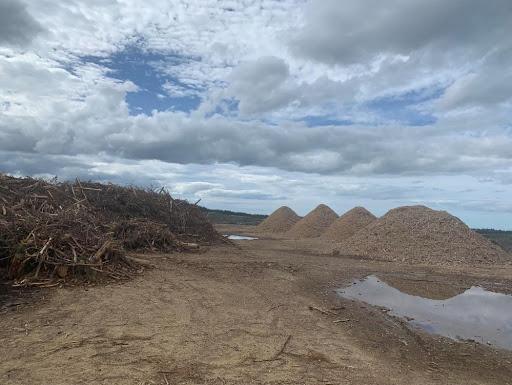Story by James Middlewick, March 2023
The word slash is probably one of the most contentious in Aotearoa at the moment. Following the events of Cyclone Gabrielle management of slash is highly topical, especially as we experience more intense weather events.

For those of you in the Top of the South we wanted to share how slash is being managed locally.
Firstly, what is slash?
Slash is a direct consequence of forest harvesting or tree thinning activities and the National Environmental Standard for Plantation Forestry (NESPF) defines slash as “any tree waste left behind after plantation forest activities”. What this definition does not cover however is woody debris not associated with harvesting, such as trees that have died or branches that have fallen from natural events. Slash has traditionally been viewed as an under-utilised resource by the forest and wood processing industry. This view is changing and initiatives to realise the potential of this resource on a large scale are being investigated.
One local company innovating in the management of pine slash is Tasman Pine Forests who own and manage 37,000ha of plantation forest in the Nelson/Marlborough region.
Since the 1990’s, harvesting slash has been managed on Tasman Pine Forests sensitive sites and more recently chipping their slash on-site is being undertaken. This has the benefit of minimising environmental risks and allows for slash to be converted into hog fuel, a biomass considered carbon neutral and used to power boilers in large facilities like hospitals or factories, or to be used as a mulch to protect bare soil areas.
Steve Chandler, Chief Executive of Tasman Pine, says the use of slash as hog fuel will increase as more industries invest in boiler technology to burn biomass rather than fossil fuels. Tasman Pine’s management of slash is impressive and represents industry best practice.
Along with the hogging of slash, they also ensure:
- Tree breakage is minimised during felling by using specialised felling heads. These heads allow the tree to be gently placed in a particular direction, minimising the risk of the tree breaking falling into a watercourse or into a difficult to reach area.
- All harvest sites are risk assessed for slash mobilisation potential. On high-risk areas where practical the removal of dead or windthrown logs is also undertaken.
- Once on a landing log recovery is maximised, the slash that remains on the landing is stabilised, then allowed to dry for further processing into hog fuel chip or wood pellet fuel.
- Tasman Pine also avoid pushing slash over the edge of a skid site. Not only does this reduce the risk of slash mobilising, but also maximises the area available for replanting. In fact, Steve says Tasman Pine planters are usually able to freely plant harvested sites without clambering over woody debris left behind from operations.
Steve believes that maximising the use of slash as a resource is vital. In the future there is the potential to earn greater returns from slash disposal through portable on-site processing plants that can produce biofuels like ethanol and hydrogen from slash material, and these are already being used in Australia. Currently there are limitations on introducing this technology in New Zealand due to a lack of markets to utilise the fuel produced and production costs, however as biofuels become more utilised in transport this may become a valuable resource in the future.
Steve also says better public education is needed around how forestry manages slash. While Tasman Pine can control their operations to reduce the impacts of slash, they cannot control extreme weather events. Non-forestry land is also eroding into watercourses, and he says perhaps it is time to research the best types of trees, both native and exotic, to reduce erosion and maximise land retention in high-risk areas.